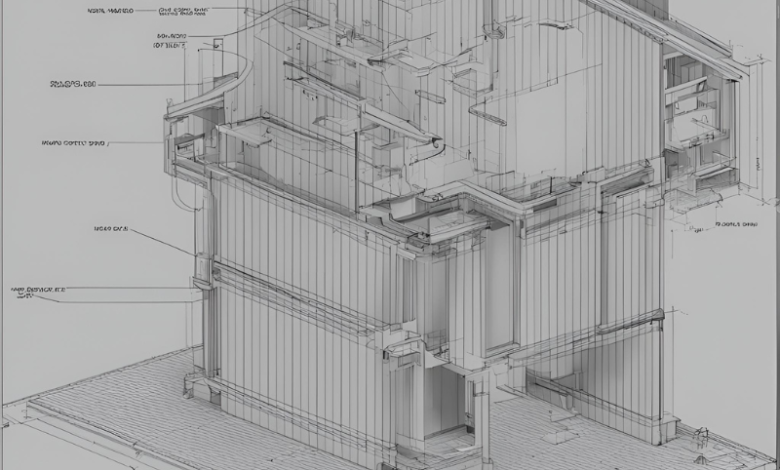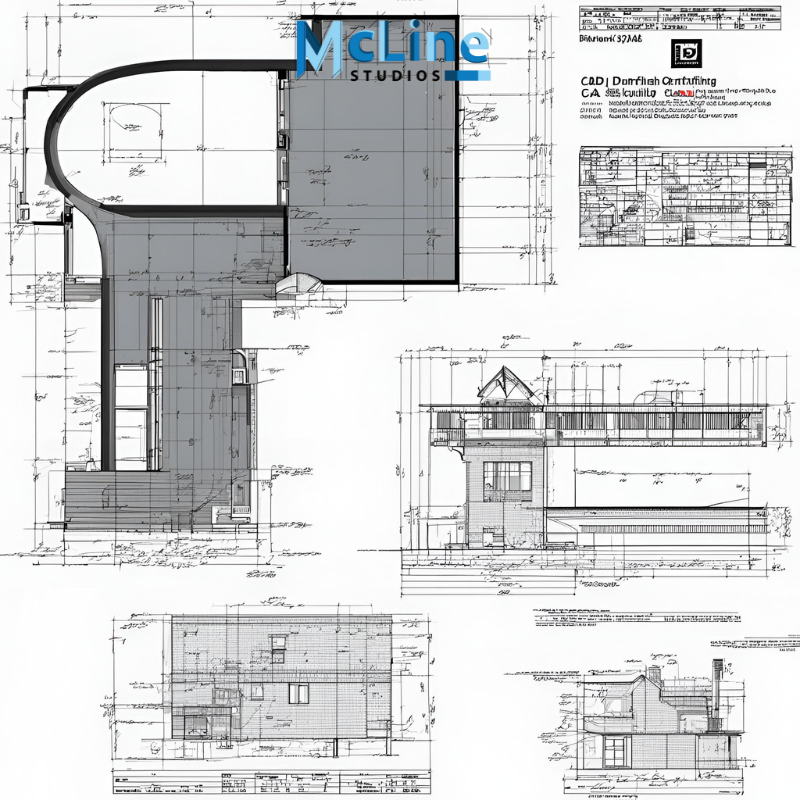Exploring the Controversies Surrounding CAD Drafting

Computer-aided design (CAD) drafting has become an indispensable tool in modern design and engineering industries. It revolutionized the way professionals conceptualize, develop, and communicate their ideas, leading to increased efficiency and precision in the design process.
However, amidst its widespread adoption, CAD drafting has sparked numerous controversies that challenge its role and impact. This introduction sets the stage for a deeper exploration of the controversies surrounding CAD drafting, inviting readers to delve into the complexities and nuances of this pivotal aspect of contemporary design practices.
The Benefits of CAD Drafting
CAD drafting offers a multitude of advantages that have transformed the landscape of design and engineering. Harnessing digital tools and software, CAD drafting enables professionals to streamline their workflows, enhance accuracy, and foster collaboration. Below are some key benefits of CAD drafting:
1. Increased Efficiency: CAD software accelerates the design process by providing tools for rapid creation, modification, and iteration of drawings. Tasks that would traditionally take hours or days can now be completed in a fraction of the time, boosting productivity and project turnaround.
2. Precision and Accuracy: CAD drafting eliminates the margin for human error inherent in manual drafting techniques. With precise measurement tools and automated features, CAD ensures that designs adhere to exact specifications, reducing costly mistakes and rework.
3. Enhanced Collaboration: CAD platforms facilitate seamless collaboration among multidisciplinary teams, regardless of geographic location. Designers, engineers, and stakeholders can easily share, review, and modify drawings in real time, fostering synergy and improving communication throughout the design process.
4. Time and Cost Savings: Streamlining workflows and minimizing errors, CAD drafting helps organizations save valuable time and resources. Projects are completed more efficiently, reducing labor costs and accelerating time-to-market, ultimately enhancing competitiveness in the marketplace.

Controversy 1: Dependency on Technology
One of the primary controversies surrounding CAD drafting is the growing dependency on technology inherent in its adoption. While CAD software offers unparalleled capabilities for design and drafting, it also raises concerns about the diminishing reliance on traditional drafting skills and the potential consequences of over-reliance on automation.
1. Loss of Traditional Skills: As CAD becomes the norm in design practices, there is a risk of diminishing traditional drafting skills such as hand drawing and manual drafting techniques. This shift could result in a loss of craftsmanship and expertise passed down through generations, raising questions about the preservation of traditional design knowledge and techniques.
2. Impact on Creativity and Innovation: The ease of use and automation features of CAD software may inadvertently stifle creativity and innovation in design. Some argue that reliance on pre-programmed templates and standardized design elements could limit designers’ ability to think outside the box and explore unconventional solutions.
3. Vulnerability to Technological Failures: Dependency on CAD software exposes design workflows to the risk of technological failures and system glitches. A software malfunction or compatibility issue could disrupt project timelines, leading to delays and cost overruns.
4. Skills Gap and Training Challenges: The rapid evolution of CAD technology necessitates ongoing training and upskilling for design professionals to remain proficient in its use. However, there exists a significant skills gap in the workforce, with many designers lacking the necessary training or expertise to fully leverage CAD capabilities.
Controversy 2: Accessibility and Inclusivity
Amidst the addition of CAD drafting in design and engineering fields, concerns have emerged regarding its accessibility and inclusivity. While CAD software offers powerful tools for design and visualization, accessibility barriers and disparities in technology access threaten to exclude certain individuals and groups from participating fully in the design process.
1. Digital Divide: The digital divide refers to the gap between those who have access to technology and those who do not, often correlated with socioeconomic factors. CAD software typically requires high-performance computing hardware and specialized training, placing it out of reach for individuals and organizations with limited resources.
2. Cost of Software Licenses: CAD software licenses can be prohibitively expensive, especially for freelancers, small businesses, and educational institutions with limited budgets. The high upfront costs and subscription models of many CAD platforms create financial barriers to entry, restricting access for individuals and organizations with limited financial resources.
3. Complexity of User Interfaces: CAD software often features complex user interfaces and steep learning curves, requiring extensive training and technical expertise to use effectively. This complexity can be daunting for novice users, particularly those without formal education or prior experience in design and engineering fields.
4. Language and Cultural Barriers: CAD software interfaces and documentation are typically available in a limited number of languages, posing challenges for non-English speakers and individuals from diverse linguistic backgrounds.
Controversy 3: Quality and Standardization
An ongoing controversy surrounding CAD drafting pertains to the quality and standardization of designs produced using CAD software. While CAD offers powerful tools for creating precise and detailed drawings, concerns persist regarding variability in the quality of CAD-generated designs and the lack of standardized practices across different software platforms.
1. Variability in Design Quality: Despite the capabilities of CAD software to produce highly accurate and detailed drawings, the quality of CAD-generated designs can vary significantly depending on factors such as user expertise, software proficiency, and adherence to best practices.
2. Lack of Standardization: CAD software vendors often develop proprietary file formats and workflows, leading to fragmentation and lack of interoperability between different software platforms.
3. Quality Control Challenges: Ensuring quality control and consistency in CAD drafting processes presents significant challenges, particularly in large-scale projects or multidisciplinary collaborations.
4. Compliance with Industry Standards: Many industries have established standards and regulations governing design practices and documentation requirements to ensure the safety, reliability, and interoperability of products and structures.
Controversy 4: Environmental Impact
An increasingly debated aspect of CAD drafting is its environmental impact, particularly concerning sustainability and carbon footprint. While CAD software offers numerous benefits in terms of efficiency and resource optimization, concerns have arisen regarding its overall environmental footprint and contribution to environmental degradation.
1. Energy Consumption: CAD software requires significant computational power to run, leading to high energy consumption, particularly in large-scale design projects or when running complex simulations and rendering tasks.
2. Electronic Waste: The rapid pace of technological advancement in CAD software often leads to frequent upgrades and obsolescence of hardware and software components. As a result, electronic waste (e-waste) generated from discarded computers, peripherals, and outdated software contributes to environmental pollution and resource depletion, posing challenges for waste management and recycling efforts.
3. Material Consumption: CAD drafting often involves the creation of detailed digital models and prototypes, which may require substantial material inputs for physical fabrication and testing.
4. Life Cycle Assessment: Assessing the environmental impact of CAD drafting requires consideration of the entire life cycle of products and systems, from design and manufacturing to use and disposal. Life cycle assessment (LCA) methodologies can help quantify the environmental impacts of CAD-generated designs and identify opportunities for optimization and eco-friendly design alternatives.
5. Sustainable Design Practices: Addressing the environmental impact of CAD drafting necessitates the adoption of sustainable design practices and principles, such as design for disassembly, material efficiency, and renewable energy integration.
6. Green Computing Initiatives: Efforts to mitigate the environmental impact of CAD drafting include the adoption of green computing initiatives, such as energy-efficient hardware, cloud computing, and virtualization technologies.
Conclusion
In conclusion, the controversies surrounding CAD drafting underscore the multifaceted nature of its impact on design, engineering, and society as a whole. While CAD software offers unprecedented efficiency, precision, and collaboration capabilities, it also raises concerns regarding technological dependency, accessibility barriers, quality control, environmental sustainability, and employment dynamics.
Addressing these controversies requires a holistic approach that balances technological innovation with ethical considerations, sustainability principles, and social equity imperatives. we can navigate the complexities of CAD drafting responsibly and harness its transformative potential to create a more inclusive, sustainable, and equitable future for all.



